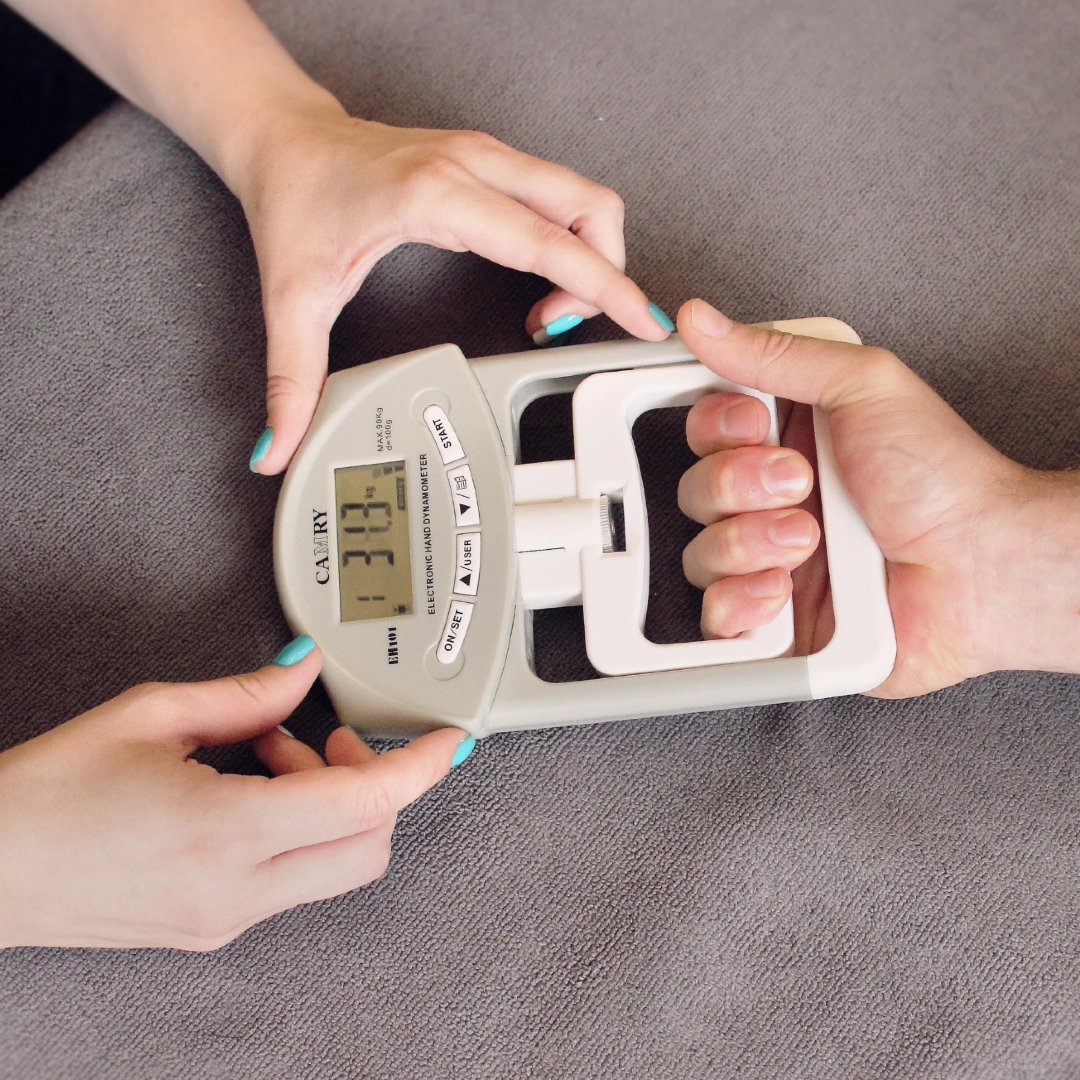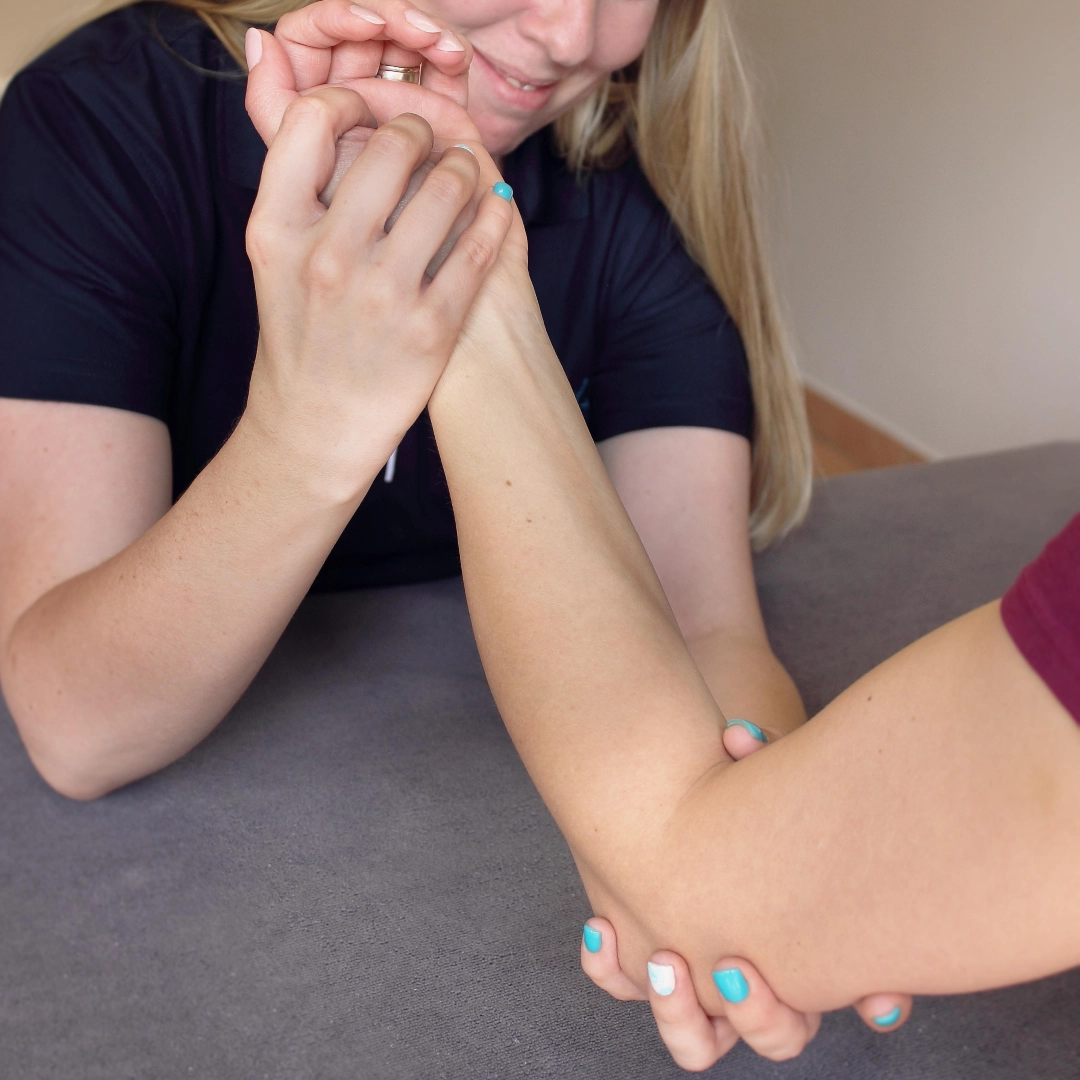The most common elbow injuries are well known – normally referred to as tennis elbow and golfer’s elbow, the correct medical terms are lateral epicondylitis and medial epicondylitis respectively.
The terms tennis and golf are not the definite causes of injury; they are a generic term applied to a set of symptoms usually experienced on either the inside, or outside of the elbow. Though it is common in those that play racket sports and golf, it can be experienced by many athletes whose sport involves any significant gripping/grasping of an object.
Identifying and addressing the root of the problem is the key to its resolution. In some instances practitioners like to simply inject the injury and carry on. However, this does not address the underlying cause and can just be a temporary fix. A complete treatment solution, addressing all aspects of the injury gives the best possible chance of success, injections do have their place, but as part of a more detailed management strategy.

Why is your elbow pain lasting longer than it should?
Does this sound like you?
If any of these have happened to you – we would love to help you. The fact that you’ve tried any or all of these things already is actually a good thing, because when you know what doesn’t work – you are closer to finding the thing that does!
We invite you to come and see us. Why? Because we do things differently. We’ll do a thorough assessment and test all the possible causes. After we’ve diagnosed your problem, and explained what it’s going to need to heal, we’ll make sure you understand why this is happening.
What you can do to get rid of your elbow pain quickly?
If you’re looking for solid advice on how to start solving your problem, you might not know if our treatment is the right thing for you, we encourage you to give us a call. This is an opportunity to get an expert’s advice about your situation. Our goal is to help you make the right decision about what to do next.
Get rid of your elbow pain – in the next few days!
What causes my elbow pain
To understand where your elbow pain is coming from, you’d have to determine how you injured it, or if you can remember when it started. Some are outright obvious like when you fall onto the floor or bang into a door, meanwhile others are subtle and creeps up on you – getting worse day by day. So, it’s easier to establish how your pain started and changed until now. Changes in your elbow pain gives us many clues to understand where your pain is coming from.
Our body consists of various types of tissue, some elastic like tendons, or strong like cables (ligaments), some tissue can generate movement & force like muscles. We rely on your elbow ligaments to keep joints stable, tendons to coordinate movements, and muscles to generate power to grip. The structures in your elbow are quite vulnerable to injury, especially overuse injuries. There are more than 52 structures in your elbow that can get injured, some problems are more common than others, but just to be safe – we test them all.
Here’s a breakdown of a few structures that can get injured that gives you different types of elbow pain:
Get to the root of your elbow pain
Different structures, cause different types of elbow pain, although these are not concrete it’s a good guideline to which structure produces what type of pain
Muscle — Dull ache or stiffness, sharp pain with contraction
Nerve — Numbness, tingling, weakness, electrical stabbing feeling
Tendon — Burning pain with certain specific movements, pain comes & goes
Ligament — Pain at the end of range, unstable, clicking
Bone — Constant pain, sharp pain with certain movements
Joints — Cramp, constant stiff feeling, worse after rest, better with movement
Cartilage — Sharp pain when at certain point, painful arch of movement
Arteries — Pins & Needles, dead leg feeling, heavy feeling
Fat pad — Pinching pain, pressure increases or decreases pain immediately
Bursa — Pain only comes on after being active, better with rest
Referral from other joints — Difficult to pinpoint pain, vague painful area
Types of elbow pain & structures they may relate to:
Nerve pain in your elbow
Muscle pain in your elbow
Joint pain in your elbow
Symptoms of elbow pain
Diagnosis of elbow pain
Our experts know and understand the intricate anatomy of your elbow. There are many structures to test, and we even consider the complex biomechanics of your shoulder & hand. We’ll accurately diagnose which structures are involved, and to what degree. This gives you a good idea what exactly is happening inside your elbow in order to establish the extent of the tissue damage.
During your evaluation, we’ll be stretching & stressing the soft tissue structures like muscles, ligaments, nerves and tendons. This way we can diagnose muscle tears, ligament sprains, tendinitis’s and nerve irritations. We’ll test different aspects like muscle strength, range of motion, flexibility and stability in order to confirm how severe your tissue damage is, which will lead us to tailor a treatment plan. Then we’ll customize the treatment to your specific needs. Therefore our specialists are the best at diagnosing elbow pain & elbow injuries.
The Process of Diagnosis:
Diagnosis is a process of exclusion, not inclusion. Medical professionals are taught a process of elimination and deduction to identify the most possible diagnosises for your elbow pain. The better you can describe & elaborate on your pain, the better picture you’ll give us to understand what’s happened & what you’re feeling.
The practitioner uses their skills to eliminate diagnosis’s it’s not and zoom in on your problem. This elimination brings us to only a few possibilities to what could be causing your elbow pain. Then we test & assess all our possibilities to get to the root cause of your pain. We encourage you to be honest and open about what you’re feeling – to clarify, carry on or change our approach.
Treatment for elbow pain
We have seen many patients with elbow pain and provide the best possible treatment for a faster recovery. Pain and stiffness after a elbow injury prevent you to grip or hold things. You might feel afraid to move, or scared you’ll damage it even more. We know that you’re anxious about the unknown, so that is why we are here to guide you and give you all the answers.
Your elbow pain treatment will be tailored according to various factors, but just to give you a broad idea, our focus of our treatments are:
- Determine what structures are injured in your elbow
- How bad is it injured?
- Protect it from further injury
- Help accelerate healing
- Re-evaluate to monitor progress
- Change and adapt as you get better
What our patients say
“I’ve been struggling with a tennis elbow for so long I can’t even remember, it got to the point where I couldn’t take it any more. Now after 4 weeks I wish that I knew what she could do for me, I would have come much earlier. She’s amazing. I recommend her any day!”
– A Botha
“She’s fantastic & brilliant. She explained my problem & set out a plan of treatment that I still follow to this day. It’s solved my problem, maybe she can help you too”
– N Ngobena
“Very professional & her knowledge is exceptional. Truly an expert with elbow pain. Just call her, she’s sooo friendly & helpful. Glad my problem is fixed now.”
– H Bekker
Other Injuries
Our associated partner: Wrist pain & Wrist injuries


